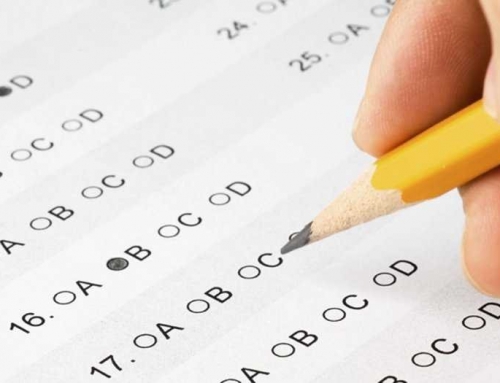1. Social mobility refers to the relationship between a person’s social class or income origins at birth and their social class or income destinations in later life. The statistics for changes in social mobility in the UK since 1945 must be treated with caution because they are heavily influenced by the initial rapid but now slower growth of white collar jobs and reduction in manual jobs in the 1950s.
2. Some claim that grammar schools were a route for social mobility. A paper by the London School of Economics for the Sutton Trust is often quoted in support(i). It looked at two cohorts of boys born in 1958 and 1970 finding that the poorest born in 1970 were more likely to stay poor than those born in 1958. The authors did not attribute the slow-down in social mobility they identified to ending selective education, but media reports did. In fact the authors noted the most socially mobile countries are the comprehensive Scandinavian countries. There has been criticism both of the media reports claiming this was evidence of the need to reintroduce selection and the claim that the research is evidence of a marked drop in social mobility. One important point is that the time those born in 1958 were 16 the country was largely comprehensive (ii,iii)
3. Professor John Goldthorpe writing in 2013 (iv) said that ‘relative rates have remained more or less constant back to the inter-war years. …what can be achieved through education, whether in regard to absolute or relative mobility, appears limited’. As Benn and Downs argued recently (v) what is more likely to account for any change is that the structure of the labour Market changed markedly during the 20th century with the rapid growth of professional employment after the Second World War which then slowed down. A recent OECD (vi)report indicated that social mobility in Britain was not as bad as some think. Academic deliberations on mobility are complex (vii). What is clear that action is needed to improve educational outcomes for poor children (viii) and that more needs to be done that children identified has highly able at primary school do not fall behind by GCSE (ix).
4. The Centre for Market and Public Organisation looked at selective education in 2007 (x). It reported on work by Professor David Jesson which found that grammar schools are ‘rarely attended by poor children and do not represent a ladder of opportunity’. The Statistical Bulletin published by the Government in 2008 showed that grammar school year 7 FSM intakes were lower than average and are not representative of their local areas. Since then much has been written about the low numbers of disadvantaged children who go to selective schools for example work by Francis and Wong (xi) in 2013. Cribb, Sibieta and Vignoles in 2013 (xii) said our major finding is that, across grammar schools as a whole, the proportion of children from disadvantaged backgrounds is disproportionately low, even taking account of pupils’ achievement levels. Also in 2013 a study for the Sutton Trust (xiii) by academics from the Institute for Fiscal Studies, the University of Cambridge and York University found that more than four times as many of the 22,000 Year Seven entrants into grammar schools each year were likely to come from private schools, compared with those on free school meals.
5. The Joseph Rowntree Foundation reported on factors leading to low achievement. The researchers concluded that admissions are one factor influencing the outcome for disadvantaged pupils. The report said – ‘Anything that gives schools greater opportunities to select their pupils works to the detriment of the disadvantaged; the current ways in which school places are allocated is part of the process by which the disadvantaged end up in disproportionately worse-performing schools’ (xiv).
6. Selective schools also take a lower proportion of children from some ethnic minorities than might be expected and a higher proportion of children from other ethnic minority groups. Typically Indian and Chinese pupils are taken in larger numbers and black and Pakistani pupils in smaller numbers. A report from Slough local authority to the Commons Education and Skills committee is an illustration of this (xv). In 1999 17% of white children in Slough, 1% of Pakistani pupils and 29% of Indian pupils transferred to grammar schools. Work by West and Hind looking at the composition of students from different ethnic groups in London grammar schools found a statistically significant differences between grammars and local ‘comprehensives’ in their ethnic composition (xvi). There was a lower proportion of Black students and a higher proportion of Indian and Chinese in grammar schools.
7. Grammar schools have a lower than average incidence of pupils classified as SEN and grammar schools have a higher than average incidence of ethnic minority pupils (largely due to a higher than average incidence of Indian pupils). Black African, Bangladeshi, Black Caribbean and Pakistani pupils are underrepresented in grammar schools compared to their local areas (xvii).
8. There has been an overall increase in young people entering into Higher Education since comprehensive education was introduced. However the gap in participation between poorer social class groups compared to the better off remains substantial. A House of Commons Library paper on higher education and social class highlights this (xviii) .
9. In 1999 the Oxford Vice Chancellors reported on the entry of state schools pupils into Oxford (xix). It found a two fold problem. First a large number of able candidates from the maintained sector were not applying to Oxford and second when they did apply their success rate was generally below that of candidates from the independent sector.
10. Comprehensive pupils with the appropriate grades for entry are under represented at Oxbridge. An NFER survey in 2004 (xx)compared one done in 1998. It found that greater proportion of grammar schools students were applying to Oxbridge than those from comprehensives and post-16 colleges but the gap was smaller than in 1998 and was no longer statistically significant. A Sutton Trust report in 2008 again found that comprehensive pupils with the appropriate A level grades were not applying to Oxbridge (xxi) and that there is an attrition between high achieving pupils in schools not going to university (xxii). In 2012 the Sutton Trust reported that the proportion (44%) of teachers who would advise academically-gifted pupils to apply to Oxbridge had declined since the Trust surveyed teachers five years earlier (xxiii).
11. However there is some evidence that there may be bias in the way places are offered high status universities so that state school pupils with the same expected results as those privately educated are not offered places. According to research by Dr John Jerrim again for the Sutton Trust in 2015 at least a quarter of this access gap to the top universities in England, the United States and Australia cannot be explained by academic achievement (xxiv).
12. In areas of selection failure at 11 is likely to be repeated generation after generation depressing parents’ aspirations and expectations of their own children. Gregg and Washbrook writing for the Joseph Rowntree foundation in 2009 (xxv)found ‘Parental aspirations and attitudes to education vary particularly strongly with socio-economic position. 81% of the richest mothers say they hope their 9-year-old will go to university, compared with only 37% of the poorest mothers. There are also large differences according to whether the mother found school valuable for themselves.
13. Researchers from the universities of Bath and Bristol and London Institute of Education looked at earnings in selective and comprehensive areas. Using a nationally representative panel data source, Understanding Society, they considered the adult earnings distributions of over 2500 individuals born between 1961 and 1983, comparing those who grew up in an area operating a selective schooling system to those who grew up in very similar areas operating a comprehensive schooling system. They found that there was much greater inequality in earnings in selective areas, indicating that selective systems do not help social mobility (xxvi).
14. In a report on social mobility the Institute for Public Policy Research recommended changes to admission policies so that they are more likely to create socially balanced schools as this would benefit children from lower social classes (xxvii). In its report on changes needed to the English education system the think- tank Policy Exchange recommended an end to selection on ability and aptitude because of the social segregation which lowers overall attainment (xxviii).
15. A panel chaired by the ex MP Alan Milburn on fair access to the professions reported in July 2009 (xxix). Although it had many recommendations about improving schools it did not advocate a return to selection. It referred again to the fact that in the 1950s more room at the top was opened up by increasing numbers of professional jobs. Alan Milburn has continued to chair the Social Mobility and Child Poverty Commission (xxx) which has produced several reports illustrating that privately educated people are far more likely to get the top professional jobs. No report of the commission has however called for more grammar schools. The latest report highlights that ‘less able, better-off kids are 35% more likely to become high earners than bright poor kids.’
16. Focusing on dividing children up at 11 ignores the fact that children from poorer families start school already some way behind their peers (xxxi). Rather than increasing selection there is a need to focus on early years. As the then Conservative MP David Willetts said in 2007 (xxxii) We must break free from the belief that academic selection is any longer the way to transform the life chances of bright poor kids. This is a widespread belief but we just have to recognise that there is overwhelming evidence that such academic selection entrenches advantage, it does not spread it.
17. Ianelli in Scotland looked at another comparison of selective and comprehensive systems in relation to choices made in the curriculum. Using data from the National Child Development Study she investigated the extent to which secondary school curricula account for social class differences in the chances of entering into the service class and avoiding a low-skilled occupation. The results showed that curriculum matters in the acquisition of different social classes of destination but it matters more for children from advantaged social backgrounds than for children from lower classes of origin. This is because of their higher propensity to choose subjects such as languages, English, mathematics and science, which were found to be highly valued in the labour market. Moreover, net of the effect of origin class and individual ability, all or most of the advantage associated with attendance at selective schools is accounted for by the curriculum studied there (xxxiii).
18. The Children’s Society undertook a large survey of opinion on what constituted a good childhood. Writing on ‘learning’ its chief executive Bob Reitemeier concluded that ‘Social mobility cannot simply be delivered by a fair and equitable education system. Learning needs to address poverty and parenting as well as academic achievement (xxxiv).
19. An OECD report in 2010 found that ‘segregating pupils too early on the basis of academic ability is found to undermine social mobility’xxxv. Boliver and Swift in 2011 using the National Child Development Study found that overall ‘our findings suggest that comprehensive schools were as good for mobility as the selective schools they replaced’ (xxxvi).
20. Three academics, Stephen Gorard, Adam Swift and John Goldthorpe writing for the Education Media centre in November 2014 said the belief that grammar schools help social mobility is a myth (xxxvii).
21. In 2014 education researchers at the Institute of Education (IOE) and the University of Manchester analysed the education histories of more than 7,700 people in England and Wales whose lives are being followed by the 1970 British Cohort Study. Contrary to popular opinion, they found that a grammar school education does not appear to have increased working-class pupils’ chances of getting a degree (xxxviii).
Refs
i Blanden, J, Gregg, P and Machin, S (2005), Intergenerational Mobility in Europe and North America, LSE Sutton Trust
ii Boliver, J and Swift,A. (2011) Do comprehensive schools reduce social mobility? British Journal of Society 62. 1.
iii Elliott, A. (2007) State schools since the 1950s, the good news, Trentham Books.
iv Goldthorpe JH (2013) Understanding – and Misunderstanding – Social Mobility in Britain: The Entry of the Economists, the Confusion of Politicians and the Limits of Educational Policy. Journal of Social Policy
v Benn, M and Downs, J (2015) School Myths and the evidence that blows them apart. Local Schools Network
vi Gorard, S (2014) The conversation The myth about social mobility in Britain: it’s not that bad, says new report
http://theconversation.com/the-myth-about-social-mobility-in-britain-its-not-that-bad-says-new-report-31441
vii Full Fact (2014) Measuring social mobility: how does the UK perform?
https://fullfact.org/education/social_mobility_what_is_it_how_measure-31277
viii Barnard H, (2015) Social mobility wars are back, who’s winning and why do we care? Joseph Rowntree Foundation
https://www.jrf.org.uk/blog/social-mobility-wars-are-back-%E2%80%93-who%E2%80%99s-winning-and-why-do-we-care
ix Allen, R (2015) Missing Talent. Sutton Trust
http://www.suttontrust.com/researcharchive/missing-talent/
x CMPO (2007) Selective education:Who benefits? Research into Public Policy Bulletin 5 CMPO Bristol University
xi Francis ,B and Wong, B (2013)What is preventing social mobility? A review of the evidence. ASCL
xii Cribb, J, Sibieta L, and Vignoles A,(2013) Entry into Grammar Schools in England
Institute for Fiscal Studies
xiii Cribb,J, Sibieta L, Vignoles A, Skipp A, Sadro F, and Jesson, D(2013) Poor Grammar: Entry into Grammar Schools for disadvantaged pupils in England,. Sutton Trust http://www.suttontrust.com/newsarchive/sutton-trust-prep-schools-provide-four-times-grammar-school-entrants-fsm-pupils/
xiv Casson,R. and Kingdon,G (2007), Tackling low educational achievement, Joseph Rowntree Foundation
xv Education and Skills Committee (July 2004) Secondary Education :school admissions House of Commons Volume 11 ev 234 TSO.
xvi Pennell, H,West, A and Hind, A.(2006) Secondary school admissions in London. (Clare Market Paper, 19. Centre for Educational Research, London, UK
xvii DCSF (2008 ) The Composition of Schools in England, Statistical Bulletin
xviii House of Commons Library, (2010) Higher education and social class ,Standard Note SN00620
http://researchbriefings.parliament.uk/ResearchBriefing/Summary/SN00620
xix Vice Chancellors Working Party on Access 1999 Report University of Oxford
xx Ridley,K, White,K, Styles,B and Morrison, J. (2005) Factors affecting applications to Oxford and Cambridge: repeat survey, Research report, NFER.
xxi Sutton Trust (2008). University Admissions by Individual Schools
xxii Sutton Trust (2008) Wasted Talent
http://www.suttontrust.com/researcharchive/wasted-talent-attrition-rates-high-achieving-pupils-school-university/
xxiii Sutton Trust (2012) Less than half of state teachers would advise their most able pupils to apply to Oxbridge
xxiv Jerrim.J (2013) Family background and access to high ‘status’ universities. Sutton Trust.
xxv Gregg ,P and Washbrook, E. (2009) The socio-economic gradient in child outcomes: the role of attitudes, behaviours and beliefs: The primary school years, Joseph Rowntree Foundation
xxvi Macmillan,L, Burgess, S and Dickson, M (2014) Grammar school systems increase inequality . CMPO viewpoint
https://theconversation.com/hard-evidence-do-grammar-schools-boost-social-mobility-28121
xxvii IPPR (2008) Social mobility: a background reviewfor the Liberal Democrat Commission on Social Mobility
xxviii Davies, C and Lim,C. (2008) Helping Schools Succeed: A framework for English education, Policy Exchange
xxix Cabinet Office (2009) Unleashing aspiration ,The Panel on Fair Access to the Professions
xxx Social Mobility and Child Poverty Commission, Sanctuary Buildings
20 Great Smith Street, London, SW1P 3BT
https://www.gov.uk/government/organisations/social-mobility-and-child-poverty-commission
xxxi Ward, H, (2013) Poor pupils already falling dramatically behind at school by the age of five. Times Educational Supplement.
http://news.tes.co.uk/b/news/2013/11/21/poor-five-year-olds-already-falling-behind-others-at-school.aspx
xxxii David Willetts MP, (2007) as Shadow Secretary of State for Innovation, Universities and Skills speaking to the CBI 16 May
xxxiii Iannelli (2013) The role of the school curriculum in social mobility
British Journal of Sociology of Education
Volume 34, Issue 5-06.
http://www.tandfonline.com/doi/abs/10.1080/01425692.2013.816031#preview
xxxiv The Children’s Society. (2008), The Good Childhood Inquiry
xxxv OECD (2010) Intergenerational Social Mobility: a family affair? in Going for Growth
xxxvi Boliver, J and Swift, A(2011) Do comprehensive schools reduce social mobility?, British Journal of Society 62. 1.
xxxvii Education Media Centre (2014) The myth of grammar schools & social mobility – that`s the evidence from leading academics
http://educationmediacentre.org/newsreactions/the-myth-of-grammar-schools-social-mobility-thats-the-evidence-from-leading-academics/
xxxviii UCL Institute of Education (2014) Grammar schools ‘made it no easier’ to gain elite university degrees, study finds
http://www.ioe.ac.uk/newsEvents/107903.html
http://www.independent.co.uk/news/education/education-news/grammar-school-is-no-better-for-pupils-than-a-comprehensive-9873886.html




